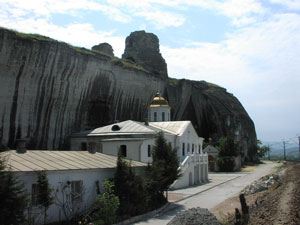
In Antiquity
In the Middle Ages
Near Outlying Areas
The Monastery of the Mother of God of Blachernai
Monastery in Sarandinakina balka
Zefir-Koba monastery
Monastic complex at cape Vinogradnyy
Caves near Skala Svyatogo Yavleniya
Fortress of Cembalo
Cave town of Kalamita or Inkerman
Syuyren' fortress
Monastery on the island in Kazach'ya bay
Far Outlying Areas
(Cave fortress)
6th - 18th centuries
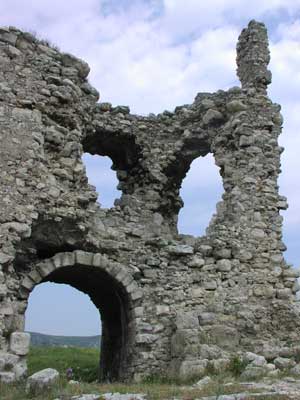
"...thereupon cliffs of that place contained multitude of 'ins', which means 'caves', the Tatars call this castle 'Inkerman'" (Evliya Celebi, 17th century)
The fortress of Kalamita or Inkerman is located in the estuary of Chernaya (Russian for "black") river, on the plateau of Monastyrskaya Skala ("monastery cliff" in Russian). In the 6th century, a Byzantine fortification was erected there and garrisoned with local dwellers, similarly to what happened in the other sites of the mountainous part of the Crimea.
| Genoese sea maps of the 14th and 15th century are the first documents to supply this fortress name in the form of "Kalamita". In the 15th c., prince Alexios of Mangup renovated this fortress, which he intended to protect the port of his principality. It was probably the time when the Christian hermitage was established in caves in depth of Monastyrskaya Skala. One of the entrances leading to the hermitage opened from the lower part of the cliff. From this entrance, a tunnel-like corridor went forward and upward; windows and two balcony doors were carved in its right wall, though in the left wall a set of rooms was arranged: vaults for secondary burials of bones, a room with through-passage and staircase leading to the upper tier, which included cells and belfry, and three cave churches. | 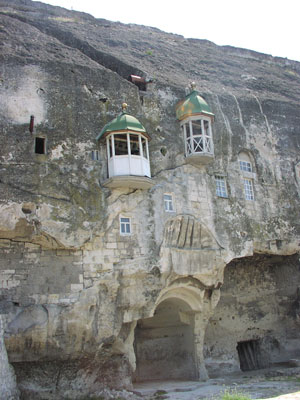 |
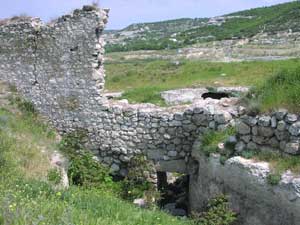 |
Apart form the hermitage described above, the rocks of Inkerman include eight Christian hermitages and twenty-seven cave churches more. When the Ottomans conquered Kalamita in 1475, they renamed the fortress Inkerman (literally "cave fortress"), and in the late 16th and early 17th centuries, they rebuild its defensive walls and towers for the use of artillery and firearms. |
| In the 17th century, according to Evliya Celebi's account, the fortress had 10 houses, but people did not live there. "...the guardians closed the gates with a key, and the commandant with his corps of fifty men, who served in the valley at the foothill of this mountain, lives in the garden. In case of some danger, the whole population of the suburb, neighboring and coastal villages comes to the castle seeking the guard within its walls". In the 17th century, vast trading was conducted through the port of Kalamita: one knows of it from the report of priest Jacob, who was in the Crimea in 1634-1635 with the Russian embassy. He wrote that peoples of many nations lived in Inkerman and that ships from many countries arrived to the city by the sea. | 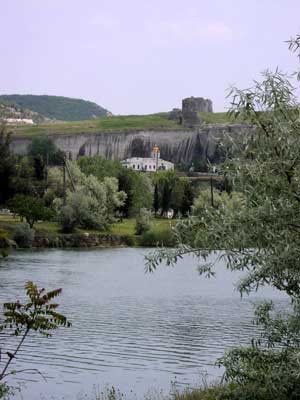 |
By the middle of the 18th century, the fortress and port of Kalamita lost military and commercial significance. After the Crimea was annexed by Russia, the medieval hermitage was renewed and consecrated in the name of St. Clement.
